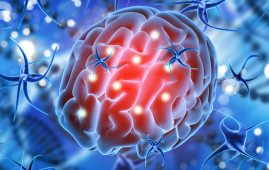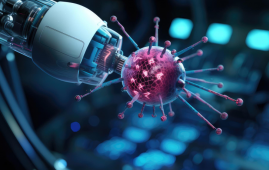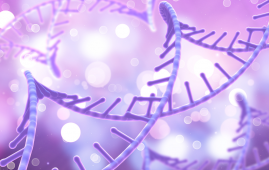

The debilitating, muscle-wasting condition Duchenne muscular dystrophy (DMD), which affects one in every 5,000 new-borns, primarily males, is believed to be caused by mutations of the dystrophin genes. Typically, those who have the illness only live into their 20s or 30s.
The same gene is now believed to play a role in oncology, according to a study conducted by the University of Portsmouth. A group of worldwide researchers examined a wide range of malignant tissues, including those from patients with gastrointestinal, ovarian, and breast cancer.
In 80% of these tumors, the expression of the DMD gene was diminished. This poor expression of dystrophins was linked to a decreased survival rate across various malignancies and a more advanced stage of malignancy.
The study, published in Cancers, calls for a re-evaluation of the current view that dystrophin expression is only important in muscles, and when found across numerous tissues is the result of an “illegitimate transcription.”
Senior author, Professor Darek Gorecki from the School of Pharmacy and Biological Sciences at the University of Portsmouth, said, “The findings that the DMD gene has a role in tumors, expands the growing evidence of its significance beyond Duchenne muscular dystrophy.
“Further investigation is needed to better understand the role of DMD in malignancies and how it may be exploited in monitoring cancer progression and treatment.”
Furthermore, these results support a recent observation that the disease starts far sooner than previously believed. The team’s modeling of DMD to examine its progression from its first trigger and initial manifestation resulted in publications in 2021. In the embryo, they discovered indications of problems that existed before birth.
The team decided to look at the DMD gene across the range of malignancies because of the similarities between early embryo development and cancer formation, including invasive potential, changes in gene expression, and other crucial behaviors. This decision led to the discovery.
Between the ages of 2 and 5, when the majority of boys with DMD are diagnosed, significant physical harm has already been done to their bodies.
Professor Gorecki says these new findings should be taken into consideration as delay in identifying the condition may be preventing therapeutic interventions that could help slow, if not stop, disease progression.
“The job of DMD, the largest human gene known, is far more complex than previously believed,” he explained.
“It must be better understood if we want to find effective treatments for pathologies caused by its mutations.”
more recommended stories
 Senescence in Neurons: Findings
Senescence in Neurons: FindingsBased on a new study by.
 Balanced Diet Linked to Enhanced Brain Health
Balanced Diet Linked to Enhanced Brain HealthDiet and brain health are strongly.
 Acid-Reducing Drugs Linked to Higher Migraine Risk
Acid-Reducing Drugs Linked to Higher Migraine RiskIndividuals who utilize acid-reducing drugs may.
 Atrial Fibrillation in Young Adults: Increased Heart Failure and Stroke Risk
Atrial Fibrillation in Young Adults: Increased Heart Failure and Stroke RiskIn a recent study published in.
 Neurodegeneration Linked to Fibrin in Brain Injury
Neurodegeneration Linked to Fibrin in Brain InjuryThe health results for the approximately.
 DELiVR: Advancing Brain Cell Mapping with AI and VR
DELiVR: Advancing Brain Cell Mapping with AI and VRDELiVR is a novel AI-based method.
 Retinal Neurodegeneration in Parkinson’s Disease
Retinal Neurodegeneration in Parkinson’s DiseaseBy measuring the thickness of the.
 Epilepsy Seizures: Role of Astrocytes in Neural Hyperactivity
Epilepsy Seizures: Role of Astrocytes in Neural HyperactivityRoughly 1% of people experience epilepsy.
 Role of Engineered Peptides in Cancer Immunotherapy
Role of Engineered Peptides in Cancer ImmunotherapyIn a recent publication in Nature.
 CRISPR-Cas9 Gene Therapy for Prostate Cancer
CRISPR-Cas9 Gene Therapy for Prostate CancerIn their preclinical model, the researchers.

Leave a Comment